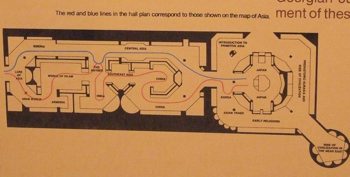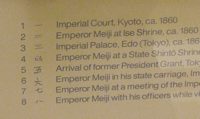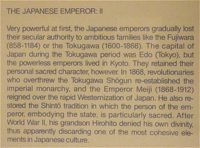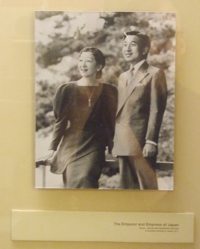Although I lived in New York for two years, I never got around to visiting many of its museums. A few weeks ago I finally paid the Museum of Natural History a visit along with a good friend of mine.
As some of my previous postings indicate, I have become more and more interested in the geographies and narration of museum exhibits. As a student of East Asian history, I was especially interested in how the museum portrayed the cultures of that region.
The museum of natural history is not just home to dinosaur bones and stuffed animals. Between the hall containing the stuffed lions and the one containing the stuffed birds, one can find the “Hall of Asian Peoples.”
In the hall of Asian peoples, with “Asia” defined in the broadest old use of the word, we can find all sorts of exhibits. The hall provides a lot of interesting material for comment, from its exhibit on “the Lure of Asia” to its portrayal of Islamic cultures and China, but I’ll just make a few comments on its portrayal of Korea and Japan. Take a look at this hall plan (click for a larger version):
I was struck by the central location of Japan in the large square room to the right. Surrounding Japan were a number of exhibits, including the “Introduction to Primitive Asia” and others. Among the exhibits on the outside of the Japanese center was one portraying the Ainu peoples.
The Ainu, of course, where almost eradicated by the Japanese. Next to this, also on the outside of the Japanese center, we find the Koreans. The entire mapping of these cultures in the museum closely mirrored the Japanese imperial order of old.
The Korean government, however, has done what it can to spruce up the exhibit a bit, which portrays a Yangban scholar at his studies, with his hanbok-clad wife working nearby. The title of the exhibit is, “KOREA: The Uniqueness.” Ah yes, that familiar claim brought back so many memories. A sign reports that, “This exhibit was made possible through the generous assistance of the Korean Cultural Service.” It saddens me that, far outside of the host countries, the arm of nationalists can reach into the heart of museums. When I was there, a crowd of delighted Korean tourists were snapping pictures. The Ainu next door were less popular with the cameras.
The heart of the square room, with its Japan exhibits, was hardly any better. I could smell the hand of Japanese government influence upon the contents of the exhibit, even if some of the contents showed unmistakable evidence of a non-Japanese hand. See, for example, the kanji characters in this numbered list of photo identifications:
Besides the general sloppiness of the handwriting, you may notice the number four (四) shows a little excess creativity. These problems, however, are found in most museums. The element of the Japan exhibit that most showed potential Japanese government or other suspect dabbling was the description of the Japanese emperor system (click for readable version):
This description of the Japanese emperor would not pass muster in a student essay in the most introductory course on Japan. The over-attribution of agency to the emperor in the Meiji period, the description of the “restoration” of Shintô which was more accurately the birth of state Shintô, is bad enough. The most interesting problem with this little snippet is what it leaves out. Notice how the paragraph jumps from the triumphs of the Meiji period, over the decades of Japanese imperialism, directly to Hirohito’s denial of divinity after World War II. How clean this picture looks: no imperial responsibility for the war, no outside pressure of Hirohito to deny his divinity hinted at.
In case the rosy picture of the text failed to persuade, no “Hall of Asian Peoples” could be without a photo of the Japanese imperial couple:






testing